Macro Calculator
This free, easy-to-use macro calculator gives you your optimal macronutrients and calories. It’s a weight loss or muscle gain calculator for both women and men.
Combine with macro counting or flexible dieting to reach your goals faster.
Now what do I do with my macros?
Our comprehensive macro-based fat loss program shows you what to do. Learn more
How do macros work?
The foods we eat are made up of three macros (macronutrients). These are carbohydrates (carbs), protein, and fat.
Chicken is high in protein but has no carbs; rice is high in carbs but has very little fat or protein. The three macronutrients provide the body with energy and raw materials for growth and repair.
By calculating the appropriate daily calorie amount for you, we can then break this down into the best macronutrient ratios to achieve weight loss.
Basic steps for macro counting
- Enter details into the calculator
Make sure to choose the correct goal. - Take note of your calories and macros
These will be the targets you are aiming for each day. - Track your macros
Use an app or pre-plan your meals. - Measure results
Don’t use basic weight scales.
Use proper body composition scales (we recommend Renpho) to measure fat and muscle mass changes.
What is a good macro ratio for fat loss or muscle gain?
Your macros should be based on your Total Daily Energy Expenditure (TDEE) and goals.
The calculator defaults to the best macro ratio proven to work for most people.
This ratio is:
- 30% fat
- Protein is 0.65 grams per pound of body weight,
- The remainder is carbs.
Depending on your goal, this will be either a calorie deficit or a surplus.
You can go further and make more adjustments: Perhaps you’re an extreme endomorph and do better with fewer carbs. Or perhaps you have one kidney and need to eat less protein.
You can fine-tune your results with a bit of math. See how to change your macros here.
What is a good protein ratio?
Rather than a percentage, proteins are based on your body weight. Our calculator has three settings:
- Moderate adjusts the ratio to 0.65 grams per pound of body weight.
This is appropriate for sedentary individuals or people with higher body fat percentages. - High is for active people with moderate strength training and an average body fat percentage.
- Maximum will set the ratio to 1 gram per pound.
This amount is good for bodybuilding and gaining muscle mass. You must be doing intense training.
Find out how to fine-tune your protein ratios when counting macros
Fat macro ratio
Set fat at 30% of daily energy expenditure.
Most people do very well with this amount of fat. See more about choosing the best macro fats. Because of high-fat diets like keto, many people are now eating more fat than they need to.
Carbohydrate macro ratio
Once you’ve calculated protein and fat, the remainder of your daily calories should be from carbohydrates.
Carbs fuel your body and workouts – and are the body’s preferred energy source.
If you come from a low-carb background, this may seem high. However, according to respected nutritional research, this is a moderate amount of carbs.
If you are eating according to your TDEE, the notion that carbs cause weight gain or stop fat loss is incorrect.
Using as a Calorie Deficit Calculator
As a weight loss calculator, this tool establishes a safe calorie deficit only.
The Lose option puts you in a 20% calorie deficit, promoting safe, steady weight loss.
The best macro ratio for body recomposition
If you want to recompose your body (lose fat and gain muscle simultaneously), then use the body recomposition calculator.
Macro ratio for maintenance
The Maintain button shows you the macro levels to maintain your current weight.
This is great if you have lost weight and don’t want to gain it back.
Macro ratio for muscle gain
The Gain button puts you in a 20% calorie surplus.
The macro breakdown is designed to build muscle fast in conjunction and must be combined with a comprehensive weight training program.
Underweight people can also use it.
TIP: Try starting with the maintenance goal and gradually increasing calories if you want lean muscle gains.
Calculating macros using your body fat percentage
The calculator uses your body weight to determine calories and macros.
However, you can obtain superior results by using your body fat percentage. The calculator allows you to choose which method: Normal for body weight, Lean Mass for fat percentage.
When to choose the Lean Mass Formula
If you are lean (have a low body fat percentage), choose the Lean Mass formula and enter your body fat %.
If you are classified as obese and have a lot of weight to lose, the lean mass formula is superior. You can read more about macro counting and obesity.
Help? Calculate your ideal body weight or get an assessment of your body fat percentage.
Why the difference? Muscle cells burn more calories than fat cells, so the more accurately we measure this, the better your results will be.
How to calculate macros per meal
You can break this down into meals once you’ve calculated your daily macros in the calculator.
Choose from 2 to 6 meals daily to see the macro ratio you can track for each meal. For some people, this is easier, but for others, this is too much detail.
Do what works for you.
Meal Plans
See a 5-day macro-based meal plan. It includes three meals and two snacks per day.
Macro calculator activity level settings
A higher activity level means a higher daily calorie goal.
For example – if you maintain your weight at 2,000 calories per day, adding vigorous daily exercise means you need more calories to maintain your weight.
If you are sedentary and trying to lose weight, adding exercise will increase your daily calorie goal.
Although it seems counterintuitive, more energy is required to fuel workouts. More workouts lead to an increasing metabolism, which in turn burns more fat!
Undereating is one of the leading causes of the weight loss plateau.
So many of our clients previously “hit the wall” with dieting. They would continually reduce calories, stop losing fat, and gain weight when they eat a little more.
Macro counting defeats this by prescribing the right food and calorie levels.
Which activity level do I choose?
- Sedentary: Just regular everyday activity like a bit of walking, a couple of flights of stairs, eating, etc.
- Light: Any activity that burns 200-400 calories (females) or 250-500 calories (males) over your sedentary amount.
- Moderate: Any activity that burns 400-650 calories (females) or 500-800 calories (males) more than your sedentary amount.
- Extreme: Any activity that burns more than 650 calories (females) or more than 800 calories (males) in addition to your sedentary amount.
Other options for determining your calorie burn
- Use our calories burned calculator – it accurately assesses over 380 activities.
- Use a fitness tracker such as a Fitbit or Apple Watch (note that they can overestimate calorie burn).
Why should I eat more when I exercise more?
High physical activity not fueled with enough calories will lead to muscle catabolism (breakdown of muscle fiber).
This lack of nutrition could stall your weight loss, so eat up if you love to exercise!
I’ve got my macros – now what?
Once you’ve identified your target daily macros, you must determine the macros in all your foods.
By tracking them daily, you can reach your recommended macro targets that encourage fat loss, muscle gain, or whatever your goal may be.
You can learn more about the macro counting system and the flexible dieting philosophy. Many people use a diet tracking app to help them stick to macro targets.
For more specifics on what to eat – see a sample macro meal plan or a list of macros for familiar foods.
View article sourcesSources
- Mifflin, M. D., St Jeor, S. T., Hill, L. A., Scott, B. J., Daugherty, S. A., & Koh, Y. O. (1990). A new predictive equation for resting energy expenditure in healthy individuals. The American Journal of Clinical Nutrition, 51 (2), 241-247. Link
- McArdle, W. D., Katch, F. I., & Katch, V. L. (2010). Exercise physiology: nutrition, energy, and human performance. Lippincott Williams & Wilkins. Link
- Jequier, E. (1994). Carbohydrates as a source of energy. The American journal of clinical nutrition, 59(3), 682S-685S.
- Lemon, P. W., Tarnopolsky, M. A., MacDougall, J. D., & Atkinson, S. A. (1992). Protein requirements and muscle mass/strength changes during intensive training in novice bodybuilders. Journal of Applied Physiology, 73(2), 767-775. study abstract link
- Grundy, S. M. (1999). The optimal ratio of fat-to-carbohydrate in the diet. Annual review of nutrition, 19(1), 325-341. abstract
- Conlin, L.A., Aguilar, D.T., Rogers, G.E. et al. Flexible vs. rigid dieting in resistance-trained individuals seeking to optimize their physiques: A randomized controlled trial. J Int Soc Sports Nutr 18, 52 (2021). https://doi.org/10.1186/s12970-021-00452-2
2,106 Comments


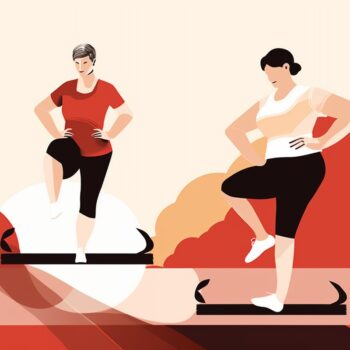 Menopause Macro Calculator
Menopause Macro Calculator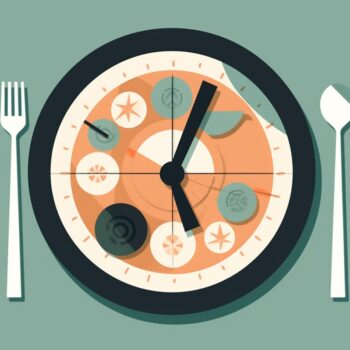 Intermittent Fasting Calculator
Intermittent Fasting Calculator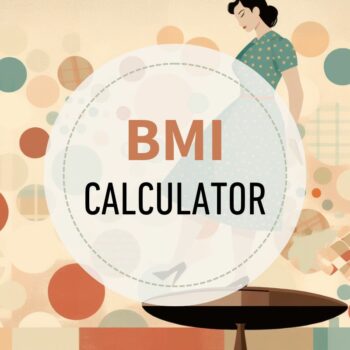 BMI Calculator
BMI Calculator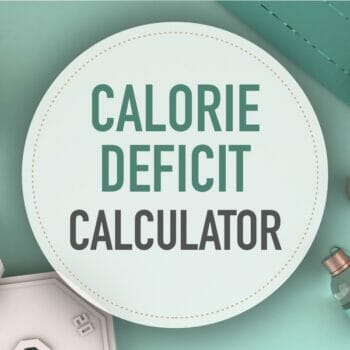 Calorie Deficit Calculator
Calorie Deficit Calculator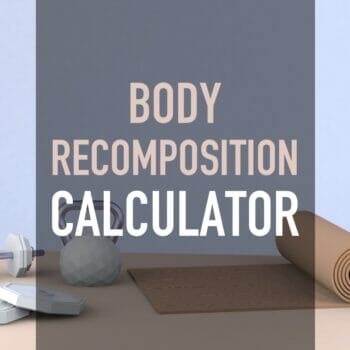 Body Recomposition Calculator
Body Recomposition Calculator
Hi, I would love some help with this. I’m trying to lose weight; I’m 24, female, 5’7″, 223lb, and definitely sedentary, although I hope to add a little more activity to my routine soon. Your calculator puts me at 1724 calories, with 139g carbs, 184g protein, and 48g fat (32.3%, 42.7%, and 25%). Based on my prior attempts, having a fairly low carb goal does make sense to me. The protein amount, though, seems intimidatingly high! I’m having trouble getting that much without going over on the fat and carb amounts. I’d rather not resort to protein powders/supplements. Would it be appropriate to use the “Low” protein setting? Or maybe I’ll have to start eating a LOT of egg whites…
I also noticed Ted’s reply to someone else that carbs will almost always be higher than protein, and I’m curious why I seem to be an exception.
Thanks for your help!
Hi There! In your case you can select “low protein” because the protein is based on your body weight, so at normal it does make it very high in your case. Even at low it is adequate especially if you aren’t doing any form of strength training. Good luck and keep us posted.
hey ted! I have some questions that I hope you can help me with. For the last two months I have been following IIFYM. I was working with a trainer who had my macros figured out for me. I started at around 137lb with my macros being 169c, 130p, 47f. I am working out 5-6 days a week, usually lifting 4-5days for about an hour to an hour and 15 minutes, and then cardio for 3-4 days a week for about 25-40minutes depending on the day. With the macros I had I was making little to no progress. My weight was severely fluctuating and I felt like I was gaining more than anything. I tried switching up the timing of what I was eating to see if it made a difference, and it did not. I really want to cut fat, I don’t want to bulk muscle. Do you have any idea as to why the IIFYM wasn’t working for me and what advice can you offer so that when I give it another go I can see the positive results I want. I am dedicated to my macros and eat pretty well and I push hard in the gym so I don’t understand why it wasn’t working. Please help! Thanks in advance
also my height is 5’2. sorry I should have put that
Hi Kristen, It seems to me like you aren’t eating enough to support your workout.. This is putting your body in starvation mode. Based on your macros, you are eating 1619 calories a day. On your gym days with cardio and weights you are probably burning 700 calories, which only leaves 919 calories for your body to function on. Such calorie deficits should only be used for those that are obese. My advice would be to use our calculator and recalculate your macros based on your exercise levels. It seems counterintuitive to eat more to lose, but this is usually the case. Good luck!
so on days where I am lifting for about 70minutes and doing cardio for about 25-30min in the same day, would that be considered very active? I do this probably 5 days a week with a 6th day of just cardio (spin class)
Correct, so you could eat at the very active level for those days and then dial your macros back on your rest days.
Oh! And as far as “bro foods” vs Junk foods. What do you suggest? 80% of calories for bro foods and 20% towards whatever I want?
Hi Ted! If I accidentally go over on my protein what should I do about my fats and carbs? In other words, should I still try and hit the other macros if I go over on one macro while still under on the others? Or should I focus on the calories?
Is there a “better” macro to go over in than others? For example, is it better to go over in fat than going over in carbs? If so, which ones are best? I don’t plan on going over. I just unfortunately do from time to time.
Hey Ace, If I go over on a particular macronutrient then I still try and aim for the set calories, and try and get as close to the other macros as possible.
And in terms of “Bro” VS junk foods, I always try and aim for around 1g fibre per 100 calories (2300 calories, 23g Fibre), which will lend itself (depending on food choices) more towards an 80-90% bro, 10-20% junk looking diet.
Hope that helps,
Dan
Thank you, Dan!
What Dan said. All the best!
Hey Ted , great right up Im confused and would love your input i have a desk job im not moving around much. However I work out 4x a week over a hour each work out on My Fitness Pal i have about 1570 cal to eat does this sound right to you ? When setting up my fitness pal i put low activity due to me being at my desk most of the day however again I do work out every other day
Hi, Light activity sounds right. Have you used our flexible dieting/ MFP tutorial? https://healthyeater.com/iifym-myfitnesspal-tutorial
What is light activity? I work out 4 times a week. 30 minute Hiits. Is that light?
I just added descriptions of each above under the heading “activity level”.
Thanks!
I am a 39 year old male. I want to lose fat. I am at 220 and my height is 76 inches. According to this calculator I need 2500 calories a day of that I need 287g of carbs 181g of protein and 69g of fat. Does that seem right because everywhere I have read to get in ketosis I need to be around 50g net carbs. Is this the only way to lose fat
Flexible Dieting is not meant for complete Ketosis as this isn’t a low carb diet. No, being in total Ketosis is not the only way to burn fat.
What would you consider my activity
I’m not sure, but on our calculator page I have given the calorie burn range for each level. Have a look there under the heading “activity level”
I’m having trouble losing my bottom belly fat what do you suggest on how to lose this? Thanks for your help
You have to drop overall body fat percentage, eventually it will come off too, but in men this is typically the last to go.
Yet another one curious about the activity level. I am a marathoner, trying to shed the 10 pounds I gained while suffering a burn out in 2014. I am getting back to legit training, doing 2 speed sessions a week and averaging about 40-50 miles a week (this number includes all miles: speed sessions, long distance run and recovery miles). I also do 3 short gym workouts a week to keep me injury free and strong. (squats, dead lifts, bench-press, pull-ups and core work). Is this considered “very active?” I always struggle with judging my activity because although I am active, I am not an olympian or anything who I would consider “very active.”
Hi Mindy, If you run 40 to 50 miles a week plus gym time, you are definitely very active. According to mapmyrun 8 miles @ a 7:30 min/mi pace for me burns 1166 calories. The cut off for very active is about an 800 calorie burn per day. I’ll take the time and spell this out for people as it seems, like you, many have the same question. All the best!
My girl is starting all this working out stuff so she asked me to have ago at this macros stuff for her , I’ve done it but noticed the carbs are higher than protein is this normal she wants to loose weight and build some muscle , any ideas thanks
Hi John, yes, with flexible dieting carbs are almost always higher than protein as it is a more balanced approach compared to other programs like Paleo or Atkins where protein would be much higher than carbs.
Hey John, also important to note, for most people, it’s physically impossible to lose fat and build muscle at the same time. The two exceptions are those brand new to training (Their body tends to react well and gain muscle easily for the first few months) and those using different forms of steroids.
Best thing to do is to pick a goal – Either lose fat or gain muscle – And then do one for a period of time, followed by the other etc.
Hope that helps!
Hello! I am trying to understand my activity level. I do bootcamp/weight three times a week for a good hour and ten mins. Which level does this best fit in? Thanks so much!
Hi D.C. Since it’s just 3 days a week I would go with Lightly Active. All the best!
Thanks! Im trying to find you on instagram
@healthyeaterted 🙂
im in the military we work out every morning and i workout on my own every evening. i consider that to be moderate activity? would you agree? also im confused as to how i would keep track of sweet food such as processed snacks. would i read it from the label?
Hi Bri, If you are talking about 2 hours a day, then I would agree. Yes, for processed foods you would look at the label per serving and how many servings you ate.
How do i know what activity level i am? I swim 3 times a week for 20 minutes (no stopping) and walk briskly on uneven terrain for around an hour on the other days, is that lightly active?
Hi George, yes, I would classify that as lightly active. All the best!